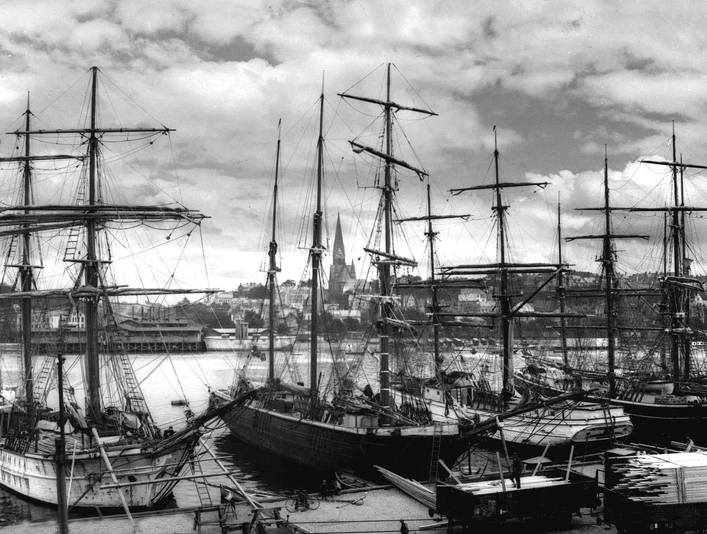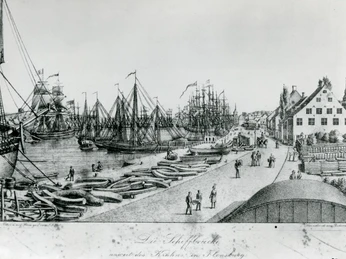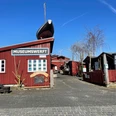Maritime Museum
With the founding of Flensburg around 1100, a medieval trading centre developed at the tip of the fjord, which in the following centuries – supported by the Danish sovereigns - grew in importance throughout the Baltic region.
Flensburg’s ships sailed the seas between Riga and Königsberg in the east, Bergen and Drontheim in the north, and Bordeaux in the south, and later also across the Atlantic to the West Indies in the Caribbean. By the end of the 16th century, Flensburg with its 6,000 inhabitants and 200 ships was the most important trading town in the Scandinavian region.
The centre of the trading port was the Schiffbrücke (ship-bridge), a landing pier for merchant vessels,
which brought in goods from all over the world to Flensburg and transhipped them here until the 20th century. At the heydays of the West India trade, exotic trade goods such as sugar, rum, coffee, tobacco, cotton, and precious woods filled the warehouses and stores of the nearby merchants' yards. The large customs packing house, Zollpackhaus, from 1843 became a monument to transatlantic trade with the Danish West Indies. Today it houses the Flensburg Maritime Museum. Shipbuilding sites were located in large numbers at the ship-bridge, though they were gradually moved further and further north due to the increase in shipping traffic. When an iron ship building company (Flensburger Schiffsbau-Gesellschaft) was founded in 1872, the wooden sailing shipyards lost their clients and disappeared from the harbour scene.
history alive with its impressive fleet of historic cargo sailing ships, steam and motor ships, classic yachts, as well as the museum shipyard and the Maritime Museum (Schifffahrtsmuseum Flensburg).
Good to know
Openings
Nearby









